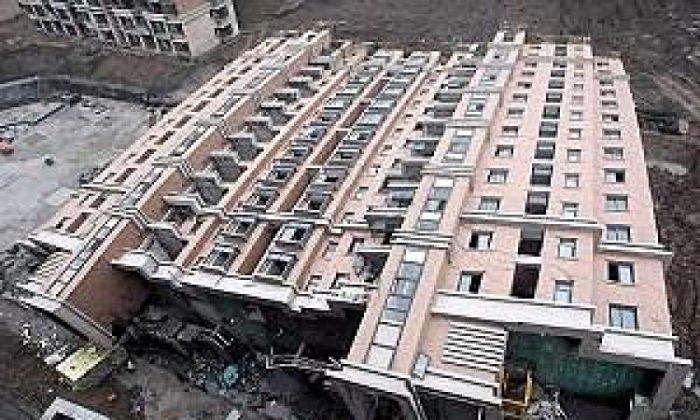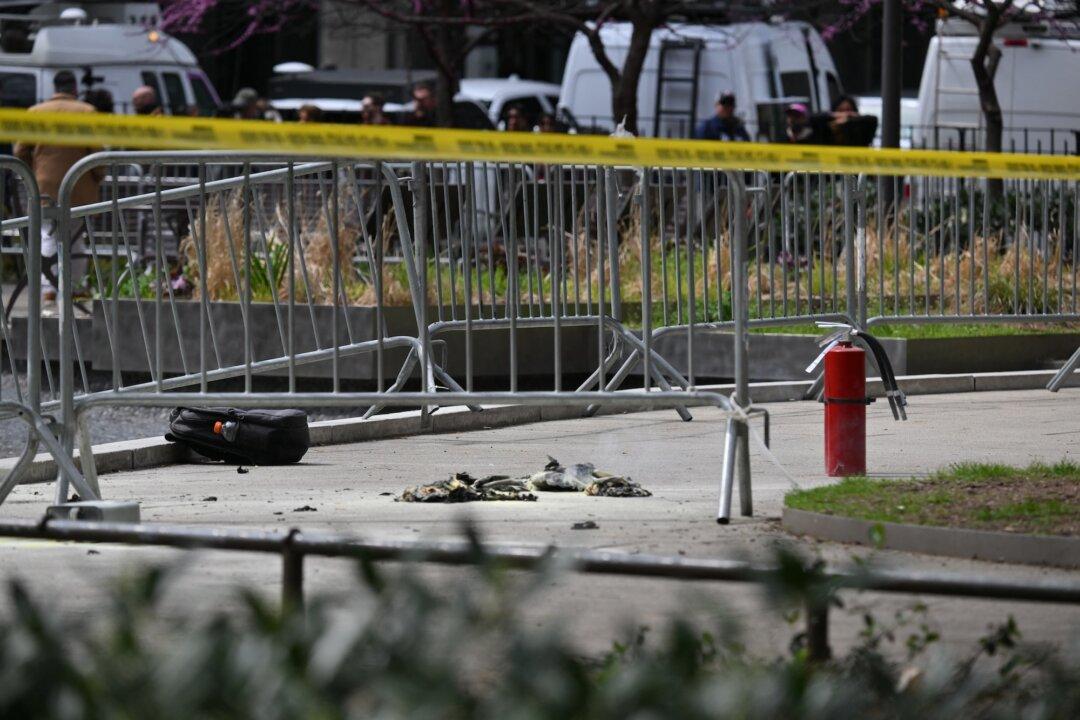Mainland Chinese are having to cope with a lot more than just ordinary daily problems and stressors. News reports about bizarre situations and events frequently appear in the media.
The following is a collection of edited reports--including about people spending thousands of dollars on carved walnuts for lack of better investment opportunities--that appeared in mainland media Top News 9 and Business World Chinese.
Building Falls Over
On June 27, 2009, a 13-story apartment building under construction in Shanghai collapsed and fell on its side. It landed in one piece, killing one worker. The building was nearing completion, but fortunately, no one had moved in yet.
An expert said it was incredible for a 13-story building to fall over and yet staying intact. He said he has been studying architecture since 1956, but has never seen anything like this.
Sky scrapers and massive new construction projects going up in many large cities is often seen as a metaphor for the “new China.” But shoddy construction abounds in an industry marred by corruption, land confiscations, and forced demolitions--all to generate income for local governments and to keep up the countries gross domestic product (GDP) numbers.
Ghost Towns
China’s economic growth model, driven by infrastructure investments, has led to ghost towns and ghost malls all over China. They are called so because of their high vacancy rate due to overcapacity.
Erdos in Inner Mongolia is often used as an example of a ghost town. National Financial Weekly said it learned that Erdos owes between 240 and 400 billion yuan (US$39-65 billion), but its annual revenue is only 37.5 billion yuan (US$6.1 billion).
At the same time housing and land prices have gone higher and higher, benefitting local governments, and creating a huge real estate bubble.
Bridge To Nowhere
Construction of the Jiaozhou Bay Bridge in Shandong Province began in May 2007, at a cost of 14.79 billion yuan (US$2.42 billion). With a span of 36.5 kilometers and 5,127 concrete pilings, it is the world’s longest bridge across water.
However, the destination and purpose for the bridge is unknown and is most likely just another infrastructure investment project to boost local GDP.
Carved Walnuts
Some Chinese, mostly officials and people with ties to the communist party, have made a lot of money in recent years, but with China’s economy slowing, a shaky real estate market, and many businesses closing down, they are unsure where to invest their money.
The Chinese stock market has fallen nearly 40 percent over the past three years, and there are limited options for overseas investment. Traditional investments in stocks and real estate has only brought small profits, and sometimes even losses.
With few investment options, the so-called “cultural plaything” market has quietly sprung up, and some people spend thousands of dollars on carved walnuts.
Walnut used to be a “plaything” within the Chinese imperial court; it is now again a favorite with the affluent. Prices for big walnut crafts and other “cultural playthings” has risen to tens of thousands of dollars. They are also seen as a status symbol and said to be good for ones health. Playing with walnuts in one’s palm is believed to help improve blood circulation.
Jade
Collecting jade carvings has also become a popular investment in China. The price for jadeite began rising in 2005 and has seen rapid growth in the last three years.
Jade has emerged strong out of the financial crisis. Thus, more and more people have become fond of it for its value preservation.
Experts console people about the high jade price, saying it will not seem so high in a couple of years. But this also indicates a frustration with the rising price.
A similar demand exists for emerald, which also continues to rise in price, and some say an emerald investment bubble has already emerged.
Gold Mooncakes
Gold and silver mooncakes have become another new favorite collector’s items for China’s rich. Chinese officials reportedly spend thousands of dollars on them. There is even a limited edition of 2,000 sets of “national treasure mid-autumn” gold mooncakes, sold for 47,620 yuan (US$7,780) per set.
Xinhua News said in a Sept. 28, 2012 article that the mooncake gold investment trend may be an indication of corruption.
Most retail outlets selling gold mooncakes are located around areas with a concentration of government offices. One dealer bluntly stated: “We are surrounded by government agencies. Many people from across the country come to buy gifts during festivals.”
Retailers even offer to split an invoice into smaller increments to make it easier for customers to get reimbursed with public fund.
Written in English by Gisela Sommer.





Friends Read Free